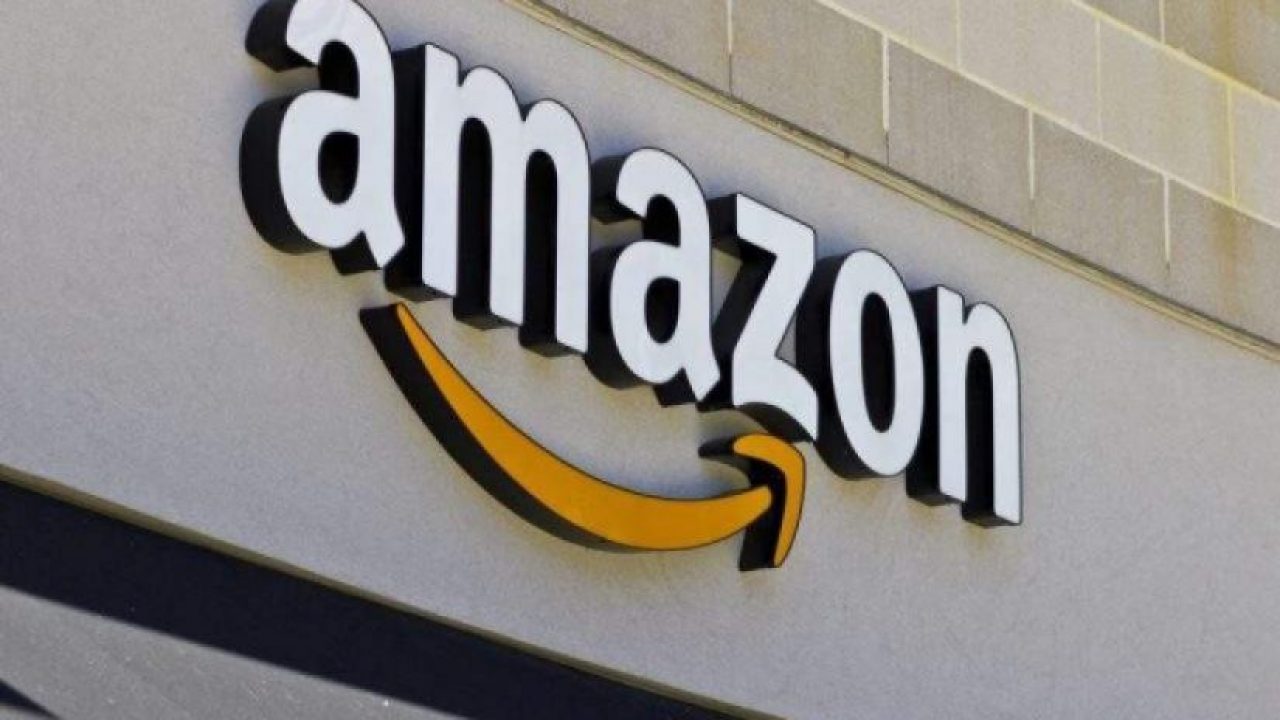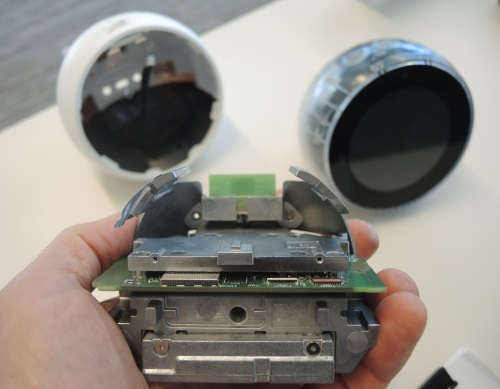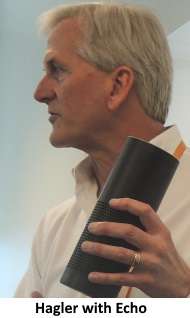A Peek Inside Lab126
Article By : Rick Merritt

Amazon invites journalists to its client hardware division, talks voice interfaces
SUNNYVALE, Calif. — In a rare move, Amazon escorted a dozen tech journalists into the secretive bowels of Lab126, its client hardware division here. Its aim was to tell the world its ready to let anyone make any kind of Alexa device they can think of — and fast.
The smart voice interface is arguably Amazon’s first hit in client devices. Its Kindle peaked early with the e-book category as a whole, and it largely struck out with its Fire tablets and smartphones.
With a big lead over rivals, the promise of Alexa-powered devices is rising. But it’s still an emerging market that’s a long way from Amazon’s home-run vision — becoming the next interface of choice for client devices and end-user queries.
In the last-generation battle of operating systems, Windows won the PC and Apple and Google tied in smartphones. Amazon is betting the next battle is the voice user interface and Alexa will draw the world to its massive data centers. Google, China’s Alibaba and Baidu and many others are chasing a similar dream.
Amazon now supports nearly 100 third-party Alexa products from light switches and thermostats to smoke alarms, HP notebooks and cars. It offers hardware reference designs from 10 semiconductor companies and two of its own design that have sold in thousands since October 2016. Altogether, millions of Alexa systems have shipped across 11 countries.
“The velocity is really increasing, and we have an amazing pipeline… so many different form factors will be coming out — that’s what’s exciting. I’ve been involved with a lot of developer networks, and you never know what you will get,” said Pete Thompson, who joined six months ago to lead Amazon Voice Services, the division driving Alexa into partner products.
One of the latest is the Eufy Genie, a smart Alexa speaker that can also control home appliances. Thompson proudly reports it took just seven months from the first meeting with the startup until they shipped a product.
“In the hardware world that is extremely quick and we continue to try to take parts out of the process so we can go faster,” said Thompson, who lead work on Microsoft’s touch-based tabletop computer, the original Surface, announced about the same time as the iPhone.
“Everybody thought you couldn’t design a device that used only a touch interface, but now that’s a natural part of our lives,” he said suggesting the next big thing is letting users speak to computers all around them.
That concept, borrowed from the TV series Star Trek, inspired the original Amazon Echo, an Amazon executive said in an interview last month. Indeed, one of the four approved wake words Amazon allows includes the Star Trek command, “Computer!”

Deep learning acceleration is in the pipeline
Amazon believes it now has a full a la carte menu of cloud APIs, reference designs, developer’s kits, modules and ODMs. It also provides engineering services to help OEMs select hardware, refine user experiences and run performance tests.
Basically, any technology Amazon’s design team has or is developing for its products will be made available to third parties. Some still require “some packaging,” said Thompson, referring to Alexa calling/texting services and devices with displays.
Chip makers powering Alexa reference designs include Cirrus Logic, Intel, Mediatek, NXP, Qualcomm, Synaptics, Texas Instruments and Xmos. For those who prefer an SoC to an ARM core and separate DSP, Allwinner and Amlogic offer chips and designs.
They range from designs supporting beam-forming across eight mics listening across a 360-degree range to a single directional mic. Amazon worked with Amlogic to remove GPU and HDMI blocks from an existing design to create an audio-only chip for lower cost.
Amazon works with transducer companies on producing smaller, better speakers. It also developed techniques for shielding mics from the distractions of a smart speaker playing music.
“There’s a huge number of products coming with audio and low cost in mind,” said Chris Hagler, director of hardware for Amazon’s core Alexa team who worked on its first Echo product.
One thing none of the designs use so far is any logic dedicated to accelerating machine learning.
“That’s a good idea,” quipped Hagler, declining to give details of what client AI acceleration Amazon will deliver or when.
“We are trying to design and seed smaller lower power and cost devices, so having accelerators is really important–some are DSPs and may have extra blocks. We want it as low in power as we can get. I can’t get into the architecture, but we do have some ideas for it,” he added.
— Rick Merritt, Silicon Valley Bureau Chief, EE Times 
Subscribe to Newsletter
Test Qr code text s ss



